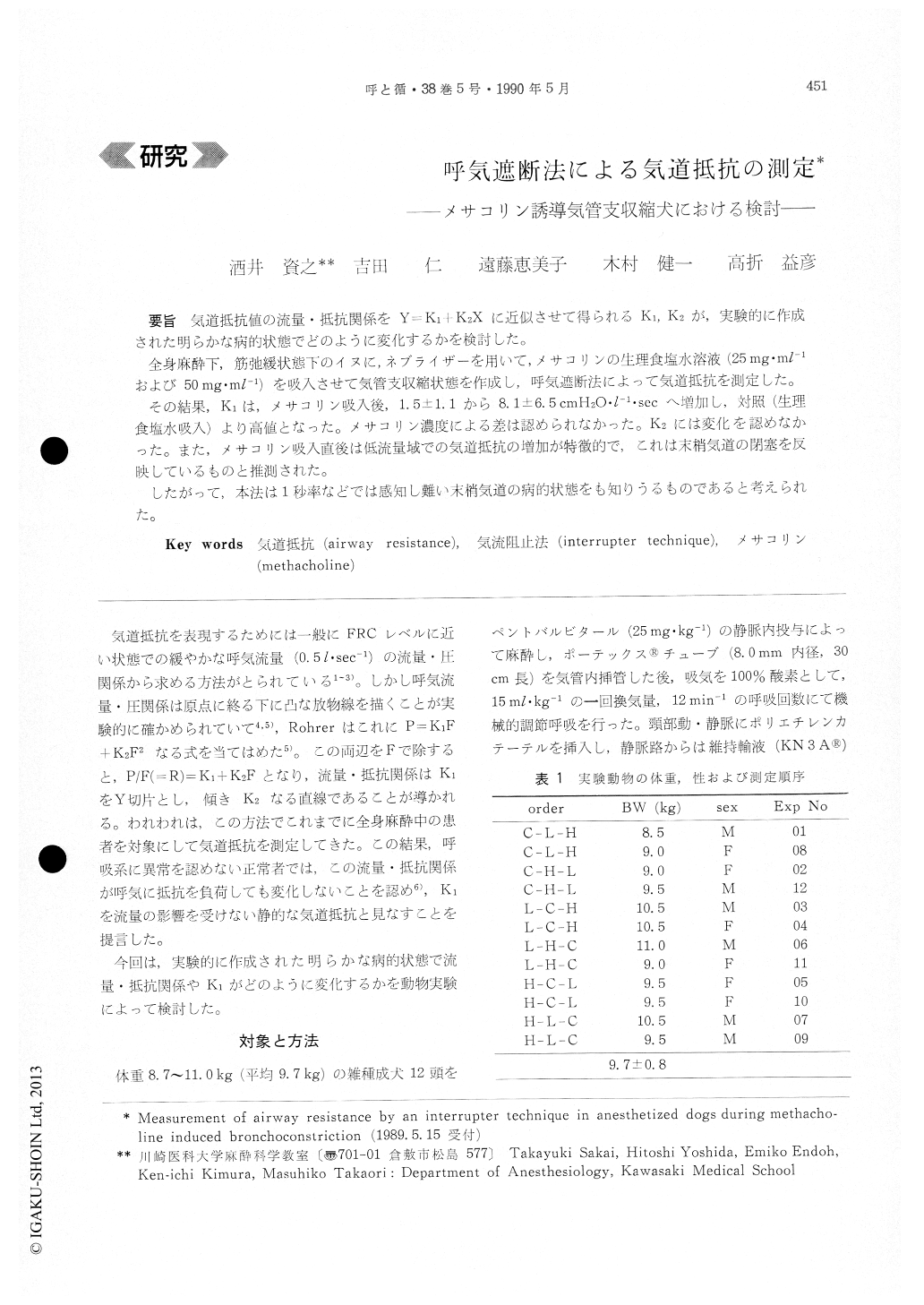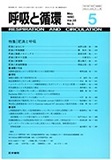Japanese
English
- 有料閲覧
- Abstract 文献概要
- 1ページ目 Look Inside
気道抵抗値の流量・抵抗関係をY=K1+K2Xに近似させて得られるK1,K2が,実験的に作成された明らかな病的状態でどのように変化するかを検討した。
全身麻酔下,筋弛緩状態下のイヌに,ネブライザーを用いて,メサコリンの生理食塩水溶液(25mg・ml−1および50mg・ml−1)を吸入させて気管支収縮状態を作成し,呼気遮断法によって気道抵抗を測定した。
その結果,K1は,メサコリン吸入後,1.5±1.1から8.1±6.5cmH2O・l−1・secへ増加し,対照(生理食塩水吸入)より高値となった。メサコリン濃度による差は認められなかった。K2には変化を認めなかった。また,メサコリン吸入直後は低流量域での気道抵抗の増加が特徴的で,これは末梢気道の閉塞を反映しているものと推測された。
したがって,本法は1秒率などでは感知し難い末梢気道の病的状態をも知りうるものであると考えられた。
Airway resistance was measured by an interrupter technique in anesthetized and paralyzed dogs. Bron-choconstriction was then induced by the inhalation of methacholine hydrochloride at a concentration of 25 or 50mg・ml-1 for ten minutes. Airway resistance was measured again immediately after the inhalation of methacholine and 50 minutes later. Under normal conditions, airway resistance increased with a linear relationship to the expiratory airflow as expressed by a function of Y=K1+K2X. K1 and K2 were cal-culated by a least square method. As a result, K1 increased markedly immediately after the inhalation of methacholine and returned to the control level thereafter. However, it was still higher than the control 50 minutes later. On the other hand, no statistically significant changes were observed be-cause the changes in K2 were variable. In some cases, K2 increased, while in others it was unchanged. K2 decreased in more cases, however, and a negative value was often seen. This inverse correlation be-tween flow and resistance was supposed to reflect the occurrence of small airway obstructions during the end expiratory phase. Therefore, it was consid-ered that this method is capable of detecting small airway abnormalities which could not be detected by %FEV1.0.

Copyright © 1990, Igaku-Shoin Ltd. All rights reserved.


